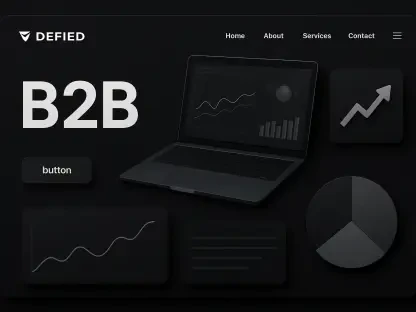Understanding Zero-Click Search: A New Era in Digital Discovery
In today’s digital landscape, a staggering statistic reveals the profound shift in user behavior: nearly 60% of Google mobile searches conclude without a single click to an external website, marking the rise of zero-click search. This phenomenon occurs when users find their answers directly on the search engine results page (SERP) through features tailored for instant information delivery. As search engines evolve into answer engines, this trend poses a critical challenge for digital marketers and SEO professionals striving to maintain visibility and drive traffic in an environment where traditional clicks are no longer guaranteed.
Zero-click search represents a fundamental change in how information is accessed online. Instead of navigating to individual websites, users increasingly rely on SERP features such as featured snippets, knowledge panels, People Also Ask sections, local packs, image carousels, and the more recent AI Overviews. These tools provide immediate responses, reducing the need for further exploration. The implication is clear: while visibility on the SERP remains high, the actual traffic to websites is diminishing, forcing a reevaluation of long-standing digital marketing approaches.
For SEO experts, the rise of zero-click search introduces significant hurdles. Organic traffic, once a key indicator of success, is plummeting as users get what they need without leaving the search page. Traditional metrics like click-through rates are losing relevance, compelling professionals to rethink how success is measured. This shift demands innovative strategies to adapt to a landscape where being seen on the SERP can be just as vital as driving clicks, marking the dawn of a new era in digital discovery.
The Evolution and Impact of Zero-Click Features
From Featured Snippets to AI Overviews: A Shift in Search Behavior
The journey of zero-click search began with the introduction of featured snippets, often dubbed “position zero,” which positioned concise answers at the top of search results. These snippets conditioned users to expect quick, digestible information without the need to delve deeper into websites. By extracting direct content from pages, they initially drove clicks to sources, balancing visibility with traffic—a win for both search engines and content creators at the time.
Fast forward to the present, AI Overviews have taken this concept to a new level, appearing in roughly 30% of informational queries. Unlike featured snippets that pull exact text, AI Overviews synthesize data from multiple sources into cohesive responses, often leaving little incentive for users to click through. This evolution reduces direct traffic attribution, creating a disconnect between high visibility and tangible business outcomes for many brands.
This transition underscores a growing tension in the industry. While appearing in AI Overviews offers immense exposure, the lack of clicks challenges marketers to quantify the real impact on revenue or engagement. Measuring the value of being the source of an AI-generated answer, without direct user interaction, remains an unresolved puzzle, pushing the need for redefined metrics that prioritize presence over traditional traffic.
Market Trends and DatThe Growing Dominance of Zero-Click
Current data paints a vivid picture of zero-click search prevalence, with a significant portion of searches ending on the SERP itself. Features like People Also Ask appear in 78% of results, catering to users seeking quick follow-up information. This trend varies by query type: informational searches often trigger AI responses, commercial queries display product carousels, and local searches lean heavily on local packs for immediate business details.
Looking at specific impacts, publishers face dwindling traffic as AI summaries encapsulate their content, while e-commerce businesses may benefit from visual product displays directly in search results. Local businesses, meanwhile, find value in local packs that offer maps and contact information without requiring website visits. These dynamics illustrate how zero-click search reshapes engagement across diverse sectors, with each facing unique opportunities and setbacks.
Projections indicate that the influence of zero-click interactions will only grow, with AI-driven search visitors potentially overtaking traditional search mechanisms by 2028. As search engines refine their ability to deliver instant answers, the percentage of no-click searches is expected to rise. This forward-looking perspective highlights the urgency for digital marketers to pivot toward strategies that capitalize on SERP real estate rather than relying solely on click-based outcomes.
Challenges of Zero-Click Search for SEO and Digital Marketing
The ascent of zero-click search presents formidable obstacles for SEO professionals, chief among them being the decline in click-through rates. As users access information directly on the SERP, websites experience reduced traffic, making it harder to demonstrate value to stakeholders. Proving return on investment becomes a daunting task when traditional indicators of success no longer align with the reality of user behavior.
An attribution crisis further complicates the scenario, as content often fuels AI responses and SERP features without driving measurable visits or conversions. This issue hits publishers particularly hard, with their in-depth articles summarized on the SERP, eroding direct readership. Local businesses, on the other hand, must prioritize visibility in local packs over clicks, as their digital presence often translates to in-person engagement rather than website metrics.
To navigate these challenges, initial strategies involve a shift in focus. Redefining success metrics to include SERP feature presence and answer inclusion rates offers a more accurate reflection of impact. Additionally, emphasizing visibility in key features can help maintain brand relevance, even as clicks diminish. These approaches mark the first steps in adapting to a search environment where exposure can sometimes outweigh direct interaction.
Navigating the Regulatory and Ethical Landscape of Zero-Click Search
As zero-click search gains traction, regulatory considerations come to the forefront, particularly around content attribution and intellectual property. Search engines leveraging content for AI summaries or snippets without adequate credit raises questions about ownership and fair use. These concerns are amplified as creators seek recognition for their contributions in an ecosystem that often prioritizes speed over source acknowledgment.
Ethically, the synthesis of content by AI without driving traffic to original authors poses significant dilemmas. Industry analyses highlight a lack of transparency in how search engines utilize and present information, potentially undermining trust between content providers and platforms. This situation calls for clearer guidelines to ensure that creators receive due recognition, even in a zero-click context.
Compliance with data privacy laws, such as GDPR and CCPA, also plays a critical role, especially for local search features like Google Business Profile optimization. Ensuring that personal and business data displayed in local packs adheres to these regulations is essential for maintaining user trust. Looking ahead, the industry may see increased regulatory efforts to enforce better attribution mechanisms, fostering a more equitable digital space where visibility does not come at the expense of ethical standards.
The Future of Digital Marketing in a Zero-Click World
The trajectory of zero-click search points to a profound transformation, with search engines evolving into comprehensive answer engines. Fueled by advancements in AI and the integration of voice search, this shift is redefining how users interact with information. Marketers must anticipate a future where instant answers become the norm, relegating traditional website visits to a secondary role in many instances.
Emerging opportunities lie in optimizing for conversational queries that align with natural language patterns used in voice search. Building topical authority to become a preferred source for AI systems is another avenue, as is entity optimization to strengthen connections within search engine knowledge graphs. These strategies position brands to thrive in a landscape where SERP dominance often trumps click volume.
Consumer behavior is also set to evolve, with expectations for immediate, accurate responses shaping digital interactions. Businesses will need to prioritize securing prime SERP real estate while exploring cross-channel collaboration. Integrating SEO efforts with paid media, email, and social platforms ensures that content value is maximized, even when clicks are scarce, paving the way for a holistic approach to visibility in a zero-click era.
Strategies and Recommendations for Thriving in Zero-Click Search
Zero-click search stands as a transformative force in digital marketing, demanding adaptation over resistance from industry professionals. This shift challenges conventional tactics but also opens doors to innovative ways of capturing attention. By embracing the changing dynamics, marketers can turn potential setbacks into avenues for sustained growth and relevance.
Actionable strategies include formatting content for snippet capture, using concise paragraphs and structured data like comparison tables to appeal to search algorithms. Establishing E-E-A-T (Experience, Expertise, Authority, Trust) signals is crucial for building topical authority, ensuring that AI systems recognize and reference a brand consistently. Optimizing for voice and local search further enhances visibility, catering to specific user intents that dominate zero-click interactions.
Redefining success metrics is equally vital, with a focus on answer inclusion rates and SERP feature presence rather than traditional click-through data. Reporting should center on revenue-generating pages and conversions, providing stakeholders with a clearer picture of impact. Ultimately, marketers are encouraged to position their brands as indispensable sources in AI-driven search landscapes, leveraging every opportunity to maintain prominence and drive long-term success in this evolving digital frontier.
Reflecting on Insights and Looking Ahead
Reflecting on the insights gathered, the exploration of zero-click search unveiled a seismic shift in how digital marketing has operated over recent years. The dominance of SERP features and AI-driven responses redefined engagement, pushing professionals to adapt to a landscape where visibility often surpassed direct traffic in importance. This analysis highlighted the critical need for strategic evolution amid declining click-through rates.
Looking back, the challenges of attribution and ethical content use stood out as pivotal concerns that shaped industry discourse. Marketers grappled with quantifying impact while navigating regulatory landscapes to ensure fair recognition. These hurdles, though significant, spurred innovation in measurement and optimization tactics, setting a foundation for resilience.
Moving forward, the next steps involve a deeper investment in cross-channel synergies, ensuring that SEO integrates seamlessly with other marketing efforts to amplify reach. Experimenting with emerging technologies like advanced schema markup can further solidify a brand’s presence in zero-click environments. As the digital realm continues to transform, staying agile and proactive in adopting these solutions will be essential for maintaining a competitive edge and relevance.









